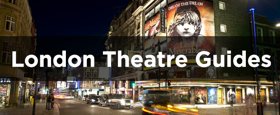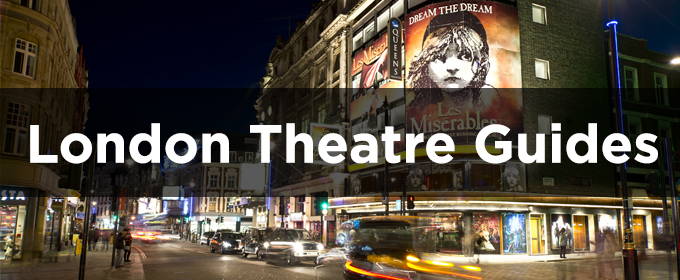Travelling To The West End: Transport and Navigation Tips

We're kicking off a new series of London Theatre Guides - providing all the information you need to make your theatre-going experience a hit, from transport and eating out to top tips on specific venues.
First up: how to travel to - and around - the West End, easily and efficiently.
Plan your route - and a back-up
London is blessed with a variety of transport options, including the Tube, overground trains, buses and taxis.
The Transport for London site is best for route-planning, letting you choose between the fastest routes and those with fewer changes (the latter sometimes easier for those less familiar with the city).
But always have a Plan B, too, in case of unexpected delays, cancellations or strikes - particularly if you're making a quick dash between work or other activities and a theatre trip. The Status Updates section of TfL also warns you in advance of planned closures (often occurring on weekends or holidays).
Oyster cards, available at all Tube and rail stations, and other shops like newsagents, are top-up travel cards that you can use on all forms of London public transport.
Travelling to the West End
There are numerous ways into the West End, including multiple Tube stations and lines, useful buses routes, and direct taxi journeys. However, if you're travelling at evening rush hour, roads in the centre of town are often jam-packed, meaning buses and other vehicles are both busy and slower - so plan accordingly.
Theatres will often list transport routes and nearby stations on their websites, along with helpful walking distances and maps.
Closer than they appear
When looking at the Tube map, be aware that it's not to scale - and plenty of those central stations are very close together. For example, you don't need to change lines to travel from Piccadilly Circus to Leicester Square; that's just a five-minute walk.
Stations with multiple interchanges, and/or in prime London hotspots - like Tottenham Court Road, Oxford Circus and Covent Garden - can all get busy, particularly around the time multiple theatres are letting out, so patience is required. And if you travel to Covent Garden, it's either a long flight of stairs on exit or a long wait for one of the busy elevators.
Nearby stations are sometimes a better bet - like Holborn, Embankment, Charing Cross or Leicester Square. You may also be able to walk easily between, for example, your choice of dinner venue and the show - the West End is fairly compact, pedestrian-friendly, and has plenty of interesting landmarks, shops and street entertainment to enjoy en route.
Commuter time
Be aware that evening theatre coincides with London's busy commuter rush, as residents travel from school and work to home or their evening's activities. Endear yourself to locals by obeying transport rules like standing on the right on Tube escalators, moving down the train carriage or bus, and having your ticket or payment ready in advance.
Taking - or avoiding - the scenic route
If you're not a West End regular, it can be hugely enjoyable strolling down a street like Shaftesbury Avenue that hosts several big shows; it's a great chance to get a sense of London's varied theatreland, and see all the signs and celebrity names up in lights.
If, however, you're short of time and just want to get to your theatre, considering turning off crowded thoroughfares like Shaftesbury Avenue or Oxford Street and finding a parallel route, then turning back on closer to the theatre. Similarly, skirt round places like Leicester Square or Piccadilly Circus, particularly at busy times like Easter or Christmas holidays.
Need help?
Though often in a rush, Londoners are a knowledgeable bunch - and, if you get stuck, are usually willing to help with directions or advice (if, for example, you're not sure the Tube or bus you're on is going the right way!).
Once you're in the West End, you'll also find mounted maps dotted around the streets telling you where you are in relation to local landmarks and transport, including major theatres. And if in doubt, theatre staff (of yours or other venues) are always friendly and helpful, so try the box office or available ushers if you get stuck.
Got questions about transport - or any other element of the theatregoing experience? Tweet us @BroadwayWorldUK!
Comments

Videos


